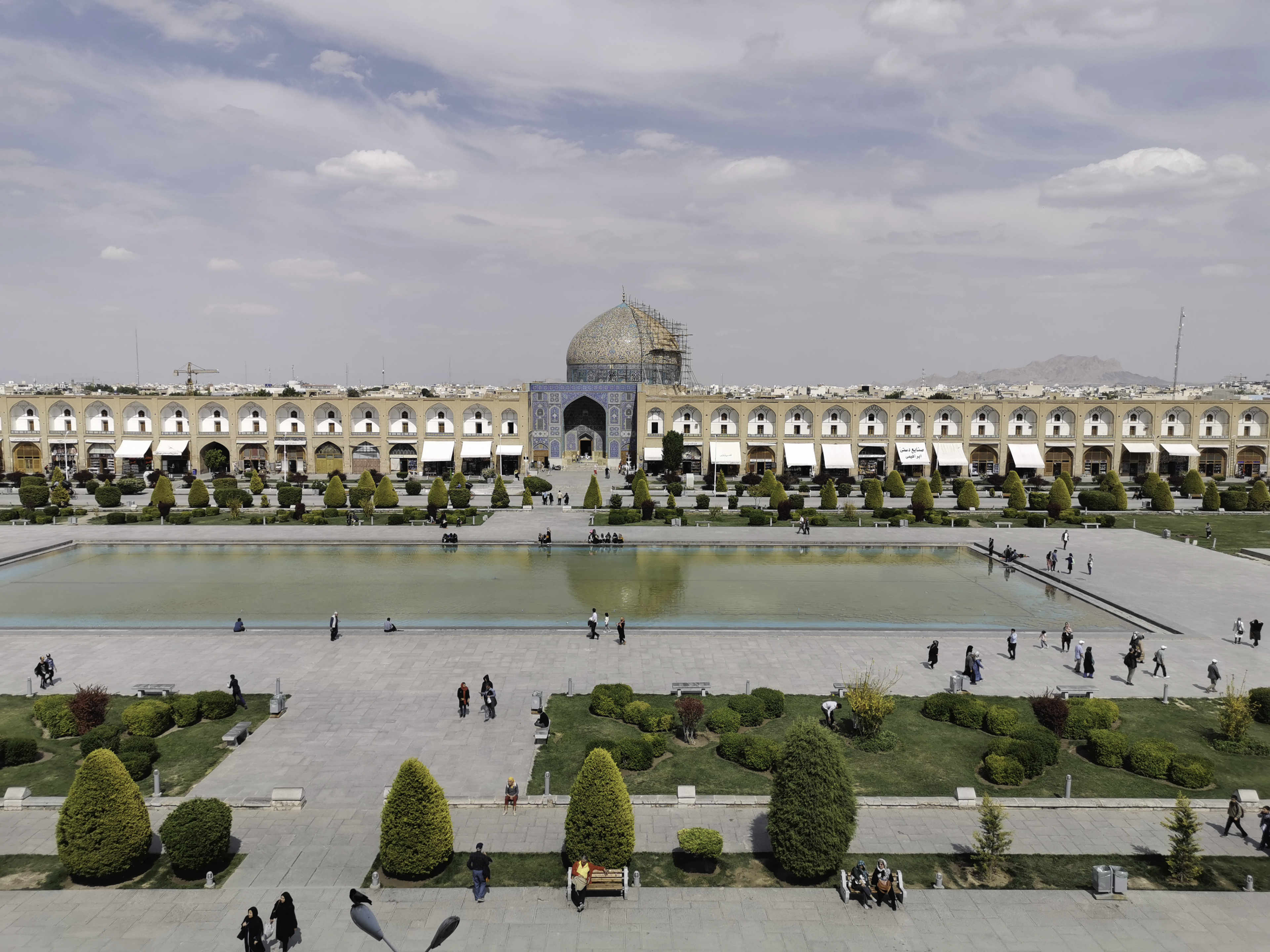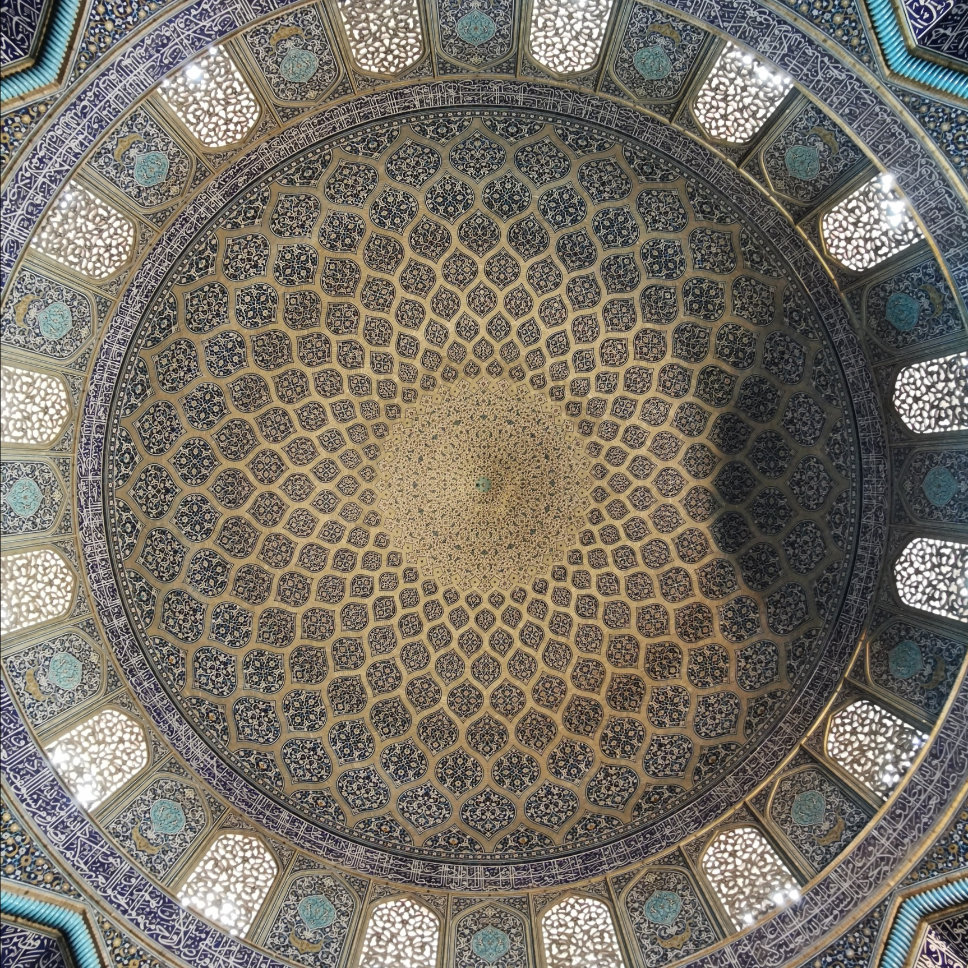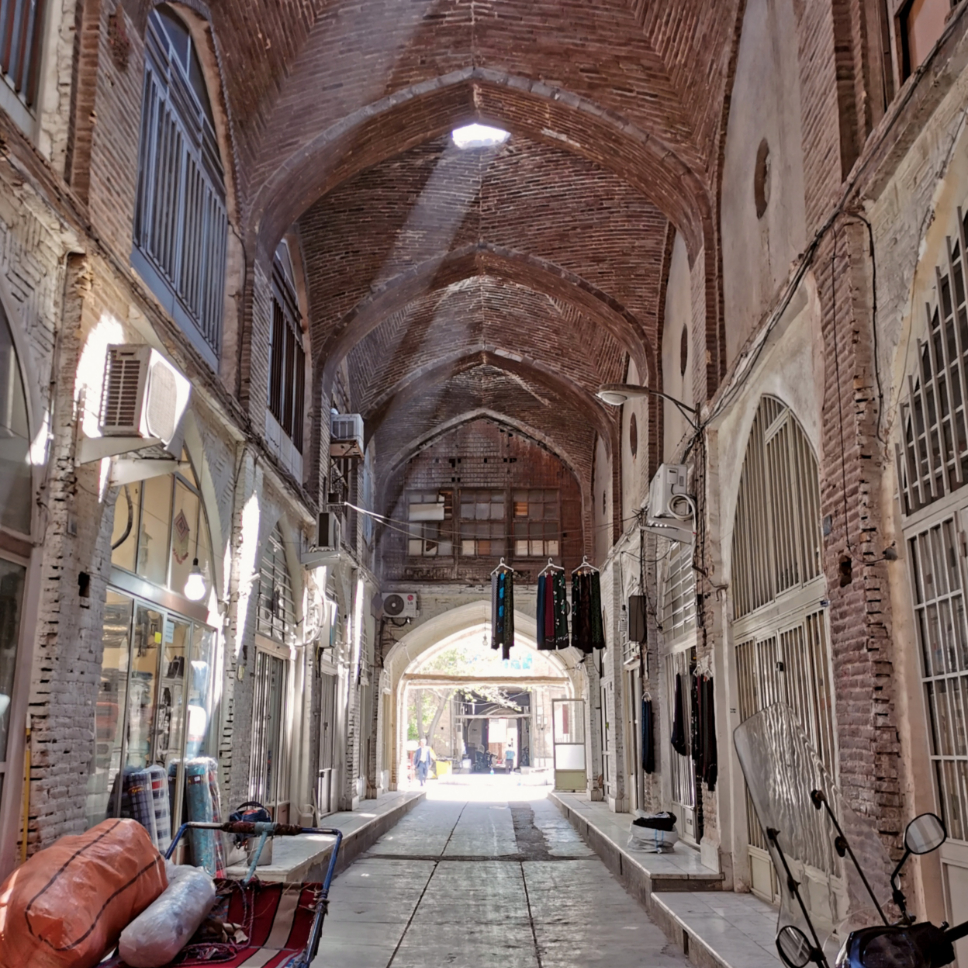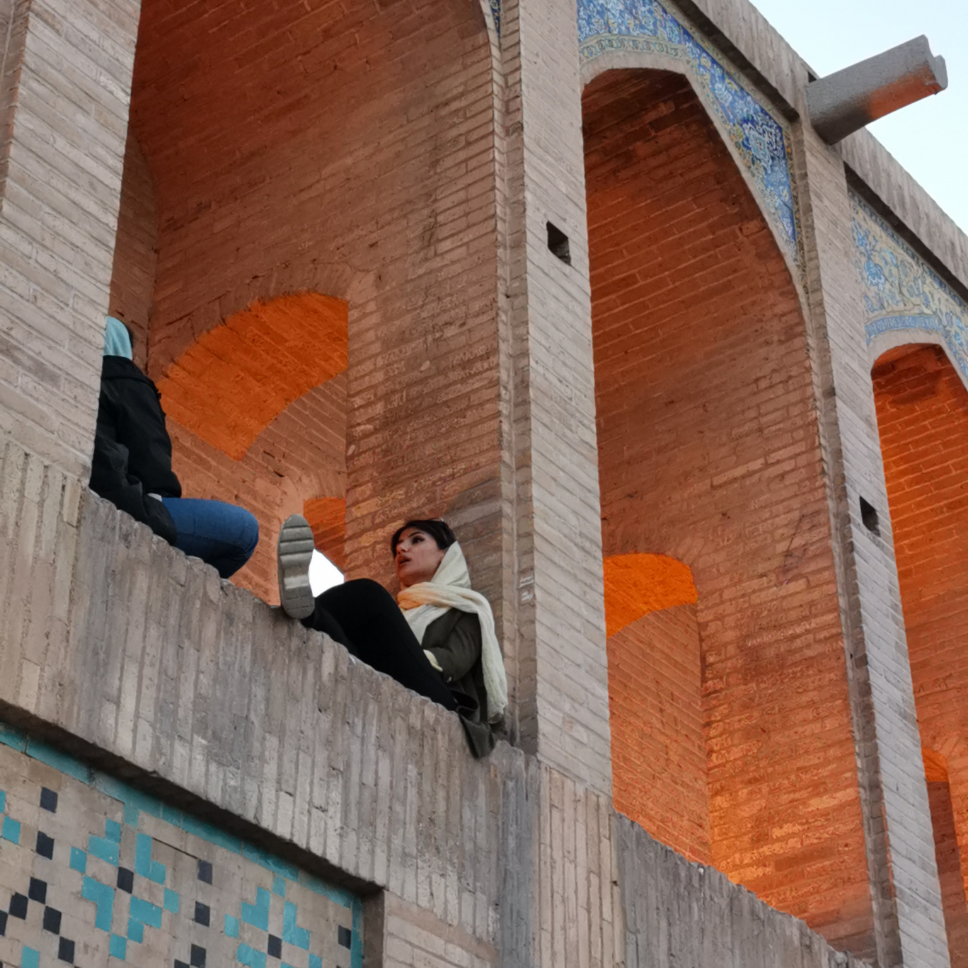Next up on our journey was the capital during the Safavid rule of Iran and modern Iran's third largest city: Esfahan. As a former royal capital it exhibits an abundance of grandiose public buildings and palaces from the 16th to 18th century. The huge (way too big to grasp by a picture) Naqsh-e Jahan Square is the city's historical center of both political, religious and commercial power.

Next up on our journey was the capital during the Safavid rule of Iran and modern Iran's third largest city: Esfahan. As a former royal capital it exhibits an abundance of grandiose public buildings and palaces from the 16th to 18th century.The huge (way too big to grasp by a picture) Naqsh-e Jahan Square is the city's historical center of both political, religious and commercial power.
Surrounding this square is the very well preserved and extremely busy bazaar, the royal palace, the huge Shah Mosque and the much smaller Lotfollah Mosque. The latter should according to Kayrokh be considered as the worlds most beautiful mosque, and we can with our limited experience nothing but agree!




Esfahan is the only city that we visited that is built on two banks of a still existing major river, Zayanderud . However, due to poor planing and droughts it has stood without water for years. This spring large parts of Iran was chocked by heavy rains followed by deadly flash floods. Many people died and were injured. Even more got their property completely or partly destroyed. A national tragedy directly related to global climate change.
When we arrived the heavy rains had ended and Zayanderud was flowing once again. Esfahan is famous for its five historical bridges, creating access between the north and the south banks of the river. The largest and most famous one is the Si-o-se-pol, the bridge of thirty three arches, built during the early 17th century. With the water back it could finally be enjoyed by the Esfahanis as a cooled public space. Here friends, couples and families gathered at sundown to enjoy each others company as well as several musical performances and the steady flow of water.
To be continued...



